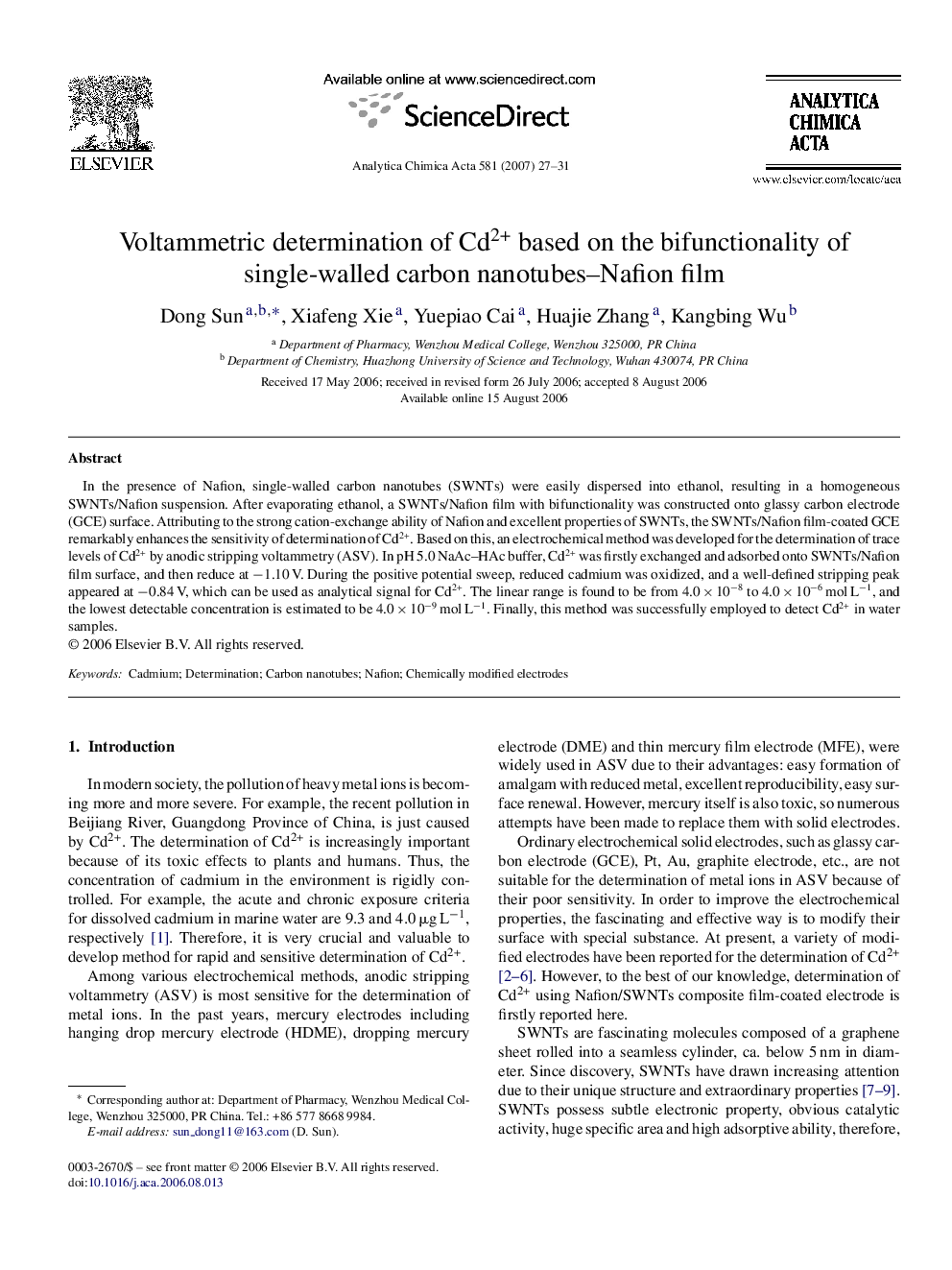| Article ID | Journal | Published Year | Pages | File Type |
|---|---|---|---|---|
| 1171539 | Analytica Chimica Acta | 2007 | 5 Pages |
In the presence of Nafion, single-walled carbon nanotubes (SWNTs) were easily dispersed into ethanol, resulting in a homogeneous SWNTs/Nafion suspension. After evaporating ethanol, a SWNTs/Nafion film with bifunctionality was constructed onto glassy carbon electrode (GCE) surface. Attributing to the strong cation-exchange ability of Nafion and excellent properties of SWNTs, the SWNTs/Nafion film-coated GCE remarkably enhances the sensitivity of determination of Cd2+. Based on this, an electrochemical method was developed for the determination of trace levels of Cd2+ by anodic stripping voltammetry (ASV). In pH 5.0 NaAc–HAc buffer, Cd2+ was firstly exchanged and adsorbed onto SWNTs/Nafion film surface, and then reduce at −1.10 V. During the positive potential sweep, reduced cadmium was oxidized, and a well-defined stripping peak appeared at −0.84 V, which can be used as analytical signal for Cd2+. The linear range is found to be from 4.0 × 10−8 to 4.0 × 10−6 mol L−1, and the lowest detectable concentration is estimated to be 4.0 × 10−9 mol L−1. Finally, this method was successfully employed to detect Cd2+ in water samples.
